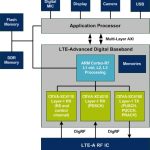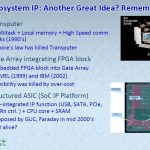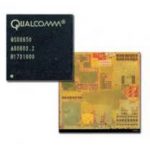At the recent NCCAVS Thin Film Users Group meeting in November, HP was on the program in the person of Joshua Yang who gave a materials centric look at the status of the HP ReRAM (Memristor) program. A colleague passed on the informative set of slides presented at the meeting. Being a former process integration team leader, I was immediately… Read More
Semiconductor Intellectual Property
When ARM and CEVA team-up for “Designing a Multi-core LTE-A Modem”
ARM and CEVA have launched a white paper, addressing one of the hottest topics of the day: LTE-Advanced modem architecture. This very exhaustive paper, written by David Maidment (Mobile Segment Manager, ARM), Chris Turner (Senior Product Manager, ARM) and Eyal Bergman (VP Product Marketing, Baseband & Connectivity, CEVA… Read More
How Apple Plans to Leverage Intel’s Foundry
Tim Cook’s strategy to disengage from Samsung as a supplier of LCDs, memory and processors while simultaneously creating a worldwide supply chain from the remnants of former leaders like Sharp, Elpida, Toshiba and soon Intel is remarkable in its scope and breadth. By 2014, Apple should have in place a supply chain for 500M iOS devices… Read More
A Brief History of the MIPS Architecture
MIPS is one of the most prolific, longest-living industry-standard processor architectures, existing in numerous incarnations over nearly three decades.
MIPS has powered products including game systems from Nintendo and Sony; DVRs from Dish Network, EchoStar and TiVo; set-top boxes from Cisco and Motorola; DTVs from Samsung… Read More
Subsystem IP, myth or reality?
I have participated to a panel during IP-SoC, I must say that “Subsystem IP, myth or Reality” was a great moment. The panel was a mix of mid-size IP vendor (CAST, Sonics), one large EDA (Martin Lund from Cadence), Semiwiki blogger and one large IDM (Peter Hirt from STM) who has very well represented the customer side. And, to make the… Read More
A Brief History of the Fabless Semiconductor Ecosystem
Clearly the fabless semiconductor ecosystem is driving the semiconductor industry and is responsible for both the majority of the innovation and the sharp decline in consumer electronics costs we have experienced. By definition, a fabless semiconductor company does not have to spend the time and money on manufacturing related… Read More
Don’t miss this Panel! Platform & Subsystem IP: Trends and Realities
If you pass by Grenoble tomorrow (Tuesday 4th Dec.) and go to IP-SoC 2012, then you should attend this panel at 4pm in the Auditorium (you can’t miss it, it’s the larger room at the registration level).
If you are Designer, Architect, Project Manager, Marketing… working for a chip maker, please prepare questions!… Read More
Arteris answer to Sonics: should compare actual NoC (in Silicon proven SoC) performance, instead of potential, unproven NoC performances!
It seems that Ateris vs. Sonics war, initiated by Sonics in 2010 on the legal battle field, is now continuing on the marketing field, as far as I am concerned, I prefer the latter, as I am an engineer and not a lawyer, and I must say that playing in the marketing allow both companies to extract the most attractive features of their products.… Read More
Give me a pair of wires, I’ll give you Ethernet in cars
A very astute gentleman said to me a few years ago that he’d seen a lot of networking technology come and go – Token Ring, FDDI, Fibre Channel, InfiniBand – but the only one that held up over time was Ethernet.… Read More
Interview with David Eggleston on Rambus-Unity CMOx
by Christie Marrian of ReRAM-Forum.com
Unity Semiconductor is a true veteran in the emerging memory/ReRAM field and was recently acquired by Rambus “one of the world’s premier technology licensing companies”. I must admit to being somewhat surprised by this acquisition when I first heard about it. Was this another example… Read More












The Quantum Threat: Why Industrial Control Systems Must Be Ready and How PQShield Is Leading the Defense